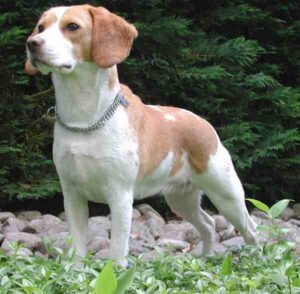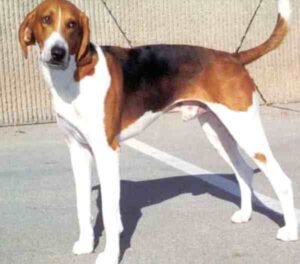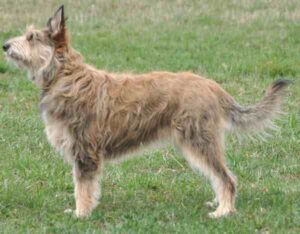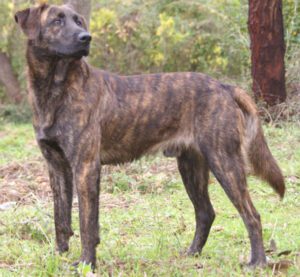The Catalan Sheepdog is a breed of Catalan Pyrenean dog used as a sheepdog. It is bred in Europe, especially in Germany, Finland, Spain and Sweden. It is also known as Gos d’Atura Català and Catalan shepherd.
As the name suggests, these dogs originated in the Catalonia region of Spain. They are thought to have been bred from ancient Pyrenees-type dogs, perhaps with influence from other herding breeds.
Though developed for herding, the Catalan Sheepdog was also used as a messenger breed and guard dog during the Spanish Civil War and they continue to be used as police dogs and search-and-rescue dogs in spain.
The breed nearly went extinct until in the 1970s, a group of breed lovers worked to revive it.[1]
Catalan Sheepdog Characteristics
The Catalan Sheepdog is a medium-sized breed. It is a well-balanced dog with a rectilinear outline, it’s back being slightly longer than the dog is tall.
It has a strong head, with skull that is slightly domed to the front and flatter at the back. The length of the muzzle is slightly less than that of the skull, and it tapers to it’s black nose.
The lips of the Catalan Sheepdog are relatively thick, though not pendulous, and they cover large teeth in a strong jaw. They have expressive round eyes and are a dark amber color, and are surrounded by black lids. While the triangular ears are set high on the head and covered in long fringes of hair.
These dogs have a long, slightly curly or flat coat of rough hair, with a thick undercoat that is especially well developed on the back half of the body.
The head has well developed eyebrows and moustaches, and the tail and limbs are also abundantly covered. They appear in a wide variety of colors and color combinations.
Average height of the mature dogs is between 17 and 19 inches at the withers. And average live body weight of the mature animals is between 20 and 25 kg for males, and between 17 and 21 kg for the females.
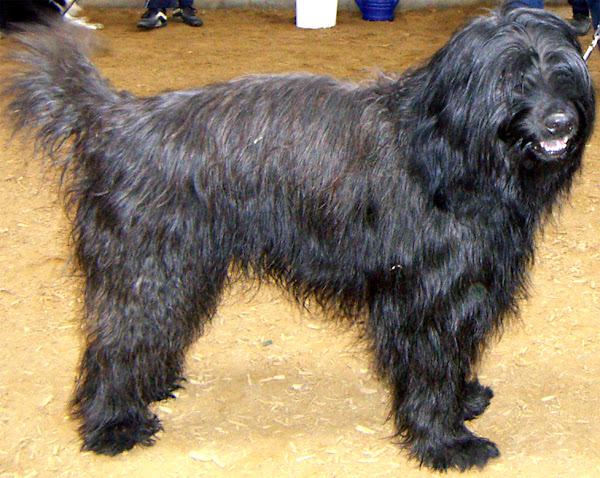
Temperament
The Catalan Sheepdog is used for herding and as a pet dog. It is very easy to train, mainly because of it’s intelligence. The breed excels at dog-sports, such as agility and doggy-dance.
In spite of its appearance, this courageous dog is also used as a watch-dog. An “all-around-dog” and great companion.
The Catalan Sheepdogs guard sheep without needing instruction. Enough (outdoor) activity and distraction makes this dog a quiet and well-balanced home companion. This breed is appropriate for people with firm techniques and who can give the dog enough exercise.
Early socialization is important, particularly if the dog will be around children. The dogs defend their family and become attached to it.
Lifespan
Average lifespan of the Catalan Sheepdog is between 12 and 14 years.
Feeding
How much a mature dog eats depends on it’s size, age, build, metabolism and activity level. Dogs are individuals, just like people, and they don’t all need the same amount of food.
The Catalan Sheepdogs are medium sized dogs and are moderately active. So, their diet should be formulated for a medium sized breed with average exercise needs. You can consult with a vet in your area for better feeding recommendations.
Caring
Taking good care of the animals is very important for raising Catalan Sheepdogs. As they were developed as a herding breed, so they are fairly active and energetic dogs.
They need plenty of time outside as well as a long daily walk in order to meet their exercise needs.
Health
The Catalan Sheepdogs are generally healthy. But like all other dog breeds, they are also prone to certain health conditions.
Their common health problem is hip dysplasia. Always try to keep good contact with a vet in your area.
| Breed Name | Catalan Sheepdog |
| Other Names | Also known as Gos d’Atura Català and Catalan shepherd |
| Breed Size | Medium |
| Height | Between 17 and 19 inches at the withers |
| Weight | Between 20 and 25 kg for males, and between 17 and 21 kg for the females |
| Good as pets | Yes |
| Climate Tolerance | All climates |
| Color | Varied |
| Lifespan | Between 12 and 14 years |
| Good for children | Yes |
| Rarity | Common |
| Country of Origin | Spain |

